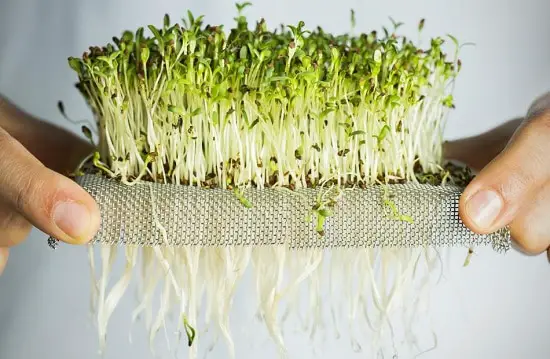Loaded with proteins and vitamins, these tiny, tender plants are both easy to grow and good for health! Learn How to Grow Microgreens Without Soil!
Microgreens are loaded with vitamins, lutein, and several other essential nutrients. They are widely used in the preparation of soups, salads, and sandwiches. For a constant, fresh supply, you can grow them easily at home! Let’s have a look at How to Grow Microgreens Without Soil!
Check out our article on the best microgreens to grow here!
What are Hydroponic Microgreens?

Hydroponics is a procedure of growing plants without soil. This eliminates the fuss of handling the soil, and the plants absorb oxygen and nutrients from the water. For good results, add fertilizer to make a nutrient-rich solution for the roots.
Other growing methods like substrates can also be used to assist roots in a hydroponic system. Other mediums include hemp mats, coconut coir, clay pebbles, rock wool, and vermiculite, though some hydroponic systems don’t need a growing medium at all.
Popular Microgreens to Grow Hydroponically

- Amaranth
- Basil
- Kale
- Broccoli
- Mustard
- Tatsoi
- Orach
- Borage
- Beet
- Parsley
- Peas
- Red pak choi
- Swiss chard
Growing Microgreens Hydroponically at Home

- It is essential to have the right pH of water. Microgreens do best in the pH range of 5.5-6.5. Always go for filtered water.
- Use 10 x 20 plastic trays with hydroponic growing pads. Pour the water and ensure that the pads are properly wet with no dry spots. Lay them flat for seeding.
- Alternatively, you can also use paper towels in place of growing pads. Fold the towel several times to make a thick layer.
- Spread seeds evenly. If you are looking forward to growing a denser crop, you can use three tablespoons of seeds. This measurement is perfect for growing microgreens like arugula, broccoli, mizuna, and radish.
- Take a mister and mist the seeds evenly with 12-15 sprays. Now, take an empty, dark-colored tray of the same size and spray the inside to mist it evenly and put it upside down on the top of the growing tray. This will provide humidity and moisture, while also keeping the seeds sheltered from excessive light.
- Place the tray at a warm location where it gets temperature between 65-85 F (18-30 C) or around it.
- Using a spray bottle, mist the tray every 10-12 hours. Do not water the tray.
- After 4-5 days, the seeds will sprout. Uncover the tray and keep it at a spot that gets direct sunlight for 3-4 hours. Also, rotate the dish, so it gets even light.
- Check the water level by pressing your finger at the pad. Pour till it covers the base of the sprouts and soaks up the pad. At this point, stop using the sprayer bottle.
- Most of the microgreens will be ready for harvest in 10-12 days. Some crops can be harvested in 7 days as well!
- Harvest them in the late evening or early morning as this keeps them fresh and crisp.
Here’s how you can grow strawberries hydroponically!
Benefits of Growing Microgreens Hydroponically

- Growing microgreens without soil need far lesser water as compared to planting in the soil. Also, you can re-use the water in the hydroponic system.
- Grow them all year round, anywhere at your home! Whether its garage, basement, patio, or a balcony!
- Some microgreen varieties like wheatgrass, kohlrabi, and kale grow well hydroponically and produce better crops compared to growing in the soil.


